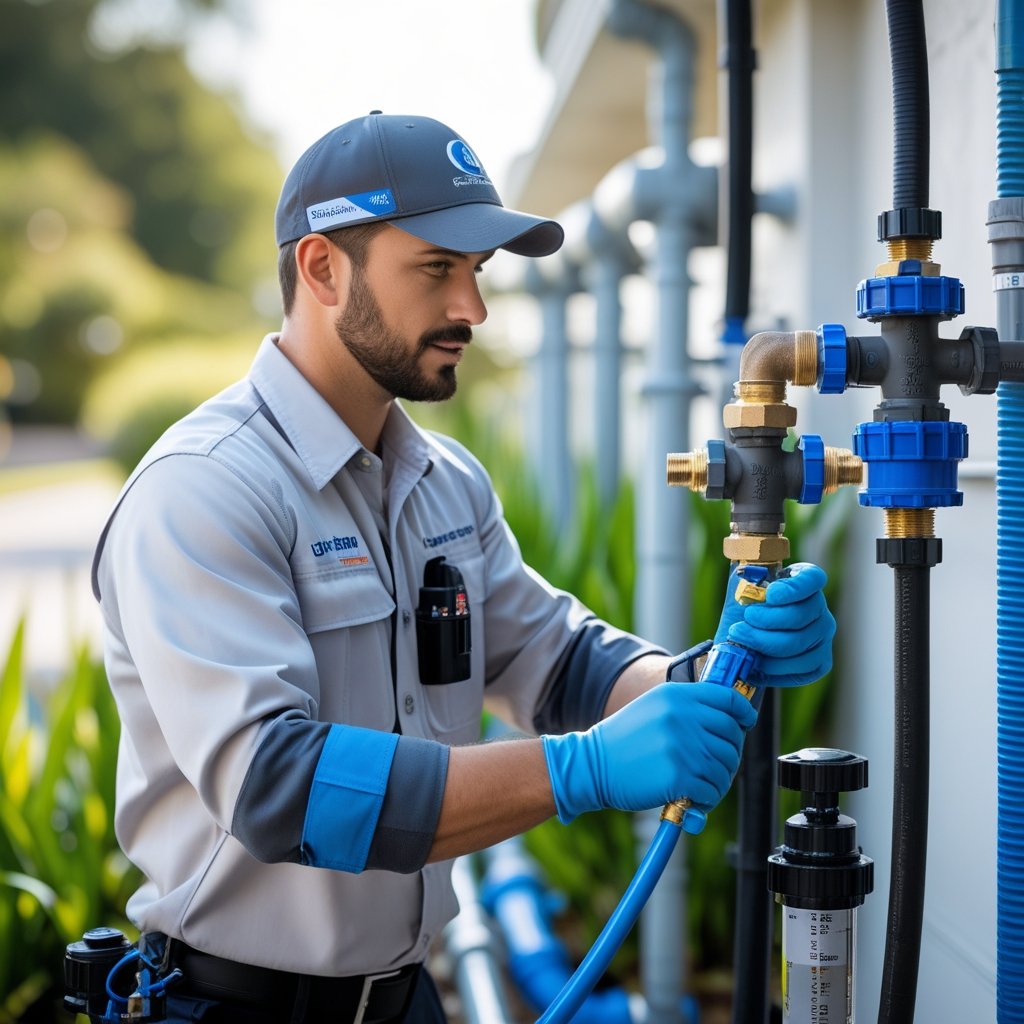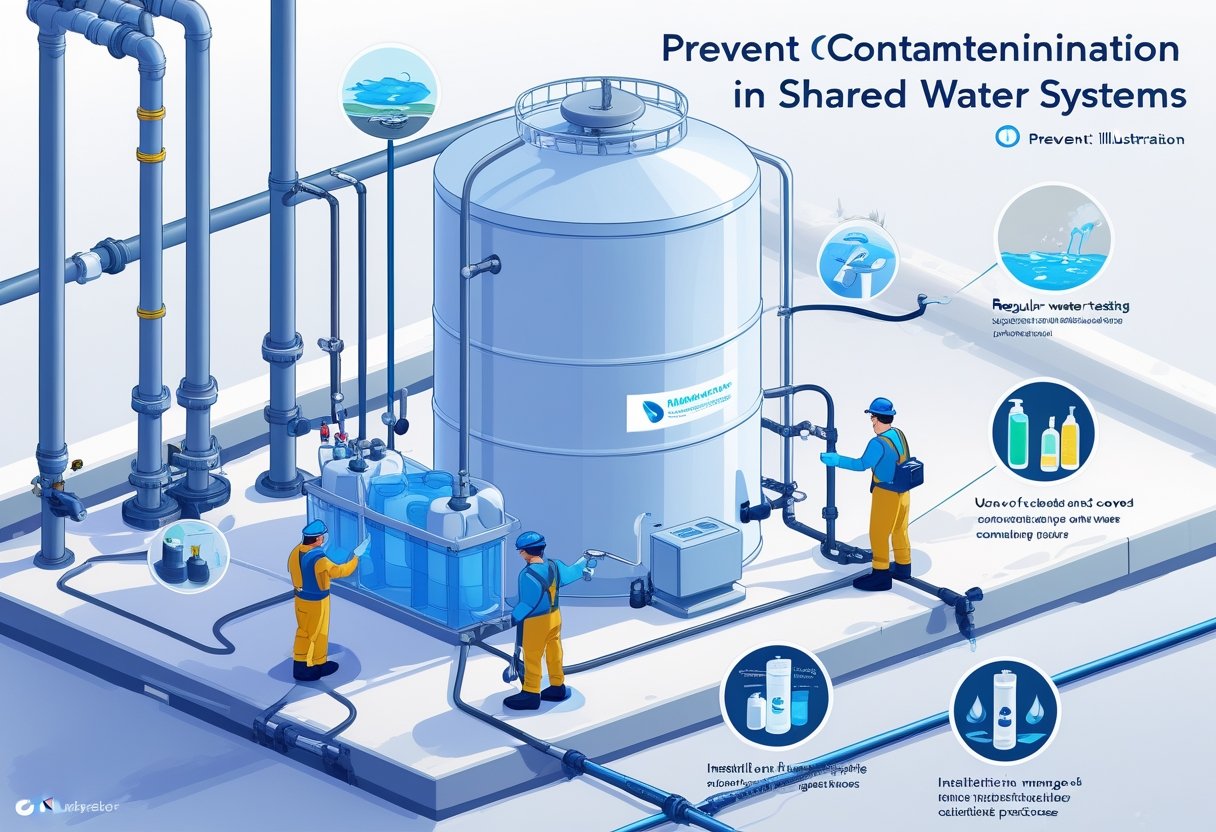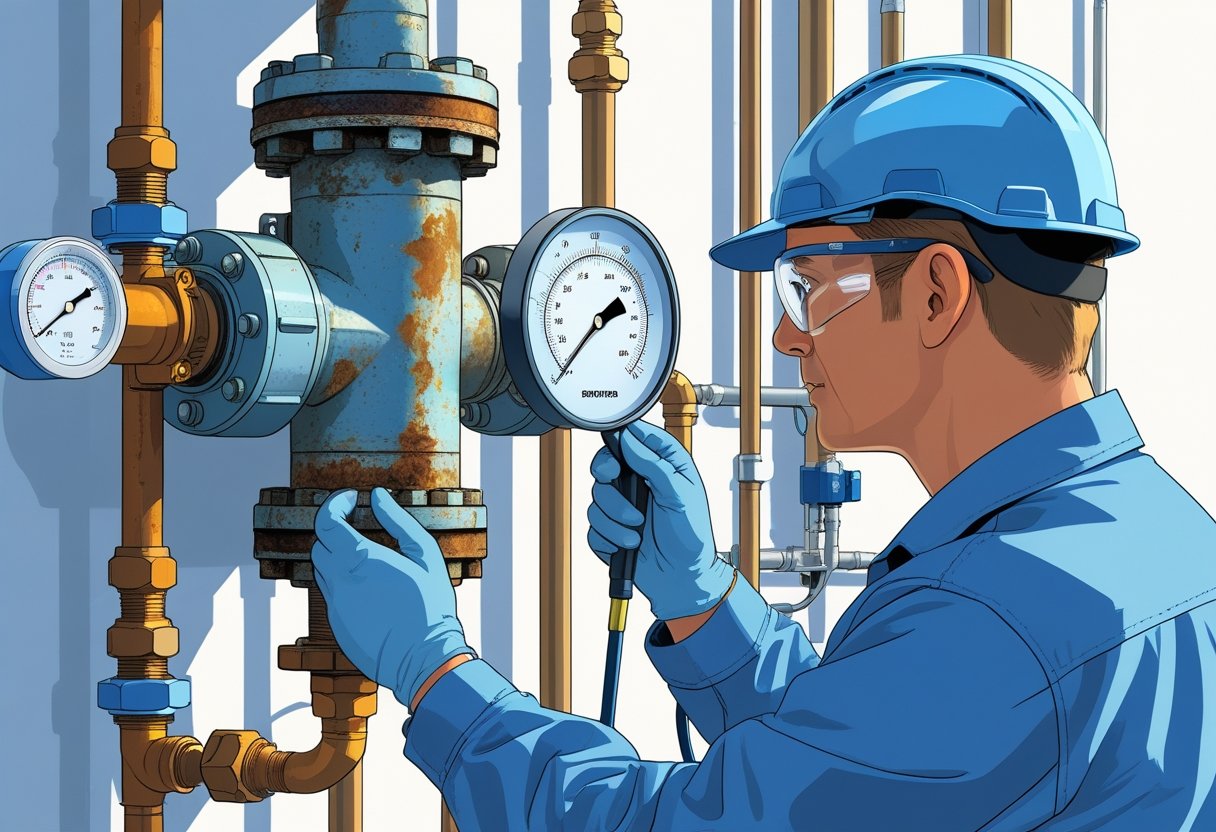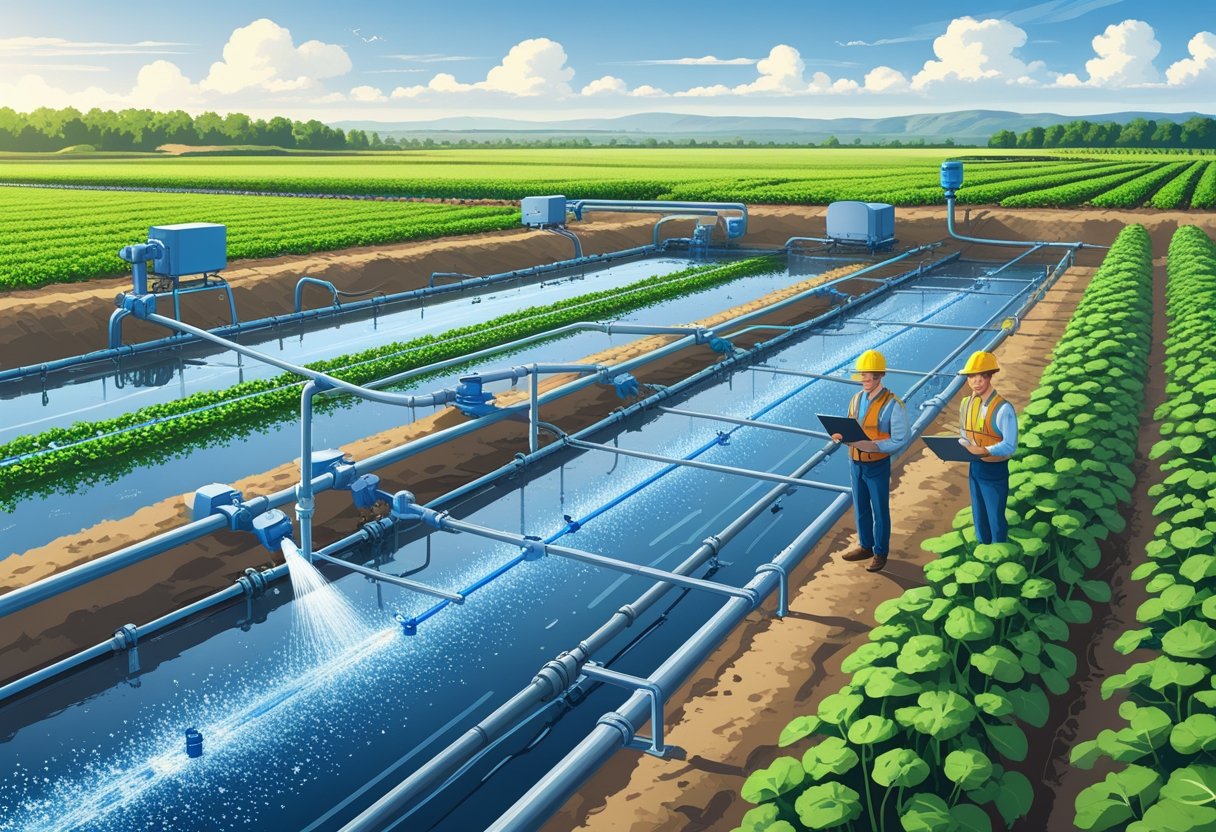If you own property in California, you’ve got to follow annual backflow testing rules to keep your water supply safe. Backflow prevention devices need to be tested at least once a year by law—no shortcuts here. The whole point? Stopping dirty water from sneaking back into your clean water system.
Getting the hang of these requirements can save you headaches with local water authorities—and honestly, it’s cheaper than dealing with repairs after something goes wrong. If you’re in San Diego County, staying on top of annual testing is just part of responsible ownership. Pacific Backflow offers quick, reliable testing to keep you compliant without the stress.
Trust certified technicians to check your backflow preventer and take care of repairs or replacements if needed. They’ll even handle the paperwork, so you don’t have to worry about missing a step. Keeping your backflow device current every year really does protect your water—and your peace of mind.
Understanding Annual Backflow Testing Requirements in California
Annual backflow testing keeps your water supply safe by making sure your prevention devices are actually doing their job. State rules cover this, and they apply to all sorts of properties. If you know what testing involves and who’s on the hook for it, you’ll dodge fines and keep your water clean.
What Is Backflow Testing?
Backflow testing checks devices that stop water from reversing into your clean supply. These gadgets are your first line of defense against contamination.
A certified pro will look over valves and seals, making sure everything’s working. If something’s worn out or busted, you’ll need repairs or a swap. Testing is usually yearly so you catch problems before they get ugly.
Testers file reports with your local water authority, proving you’re playing by the rules and helping you avoid any unwanted penalties or shut-offs.
California State Laws on Backflow Prevention
California says you need to test backflow devices at least once a year (Title 17, Article 2, Section 7605(c)). This covers all devices protecting public drinking water.
Local water districts get to set their own specifics, too. Many require testing between April and September. Certified technicians handle the tests with calibrated tools, no exceptions.
If your device flunks the test, you’ve got to repair or replace it fast. Ignoring these laws? You risk fines, service shut-offs, and even liability if something goes really wrong.
Who Is Required to Comply?
Property owners—residential, commercial, industrial, irrigation, fire lines—you’re all on the hook for annual testing. Homeowners do it to protect their families, and property managers need it for legal compliance.
Some places with higher risk might need more frequent checks. Certified professionals like Pacific Backflow cover San Diego County and make the process pretty painless.
If you get a notice from your water agency, don’t drag your feet—schedule your test and stay compliant.
Types of Backflow Prevention Devices
There’s more than one kind of backflow prevention device out there. Picking the right one and keeping it maintained is key for safety and compliance with California’s annual testing rules.
Common Device Types
The most common backflow prevention devices:
- Atmospheric Vacuum Breaker (AVB): Mainly for irrigation systems. Stops back-siphonage but can’t handle back pressure.
- Pressure Vacuum Breaker (PVB): Also for irrigation. Handles higher pressures and blocks back-siphonage.
- Double Check Valve Assembly (DCVA): Used where there’s low hazard. Two check valves keep things flowing the right way.
- Reduced Pressure Zone Device (RPZ): The heavy-duty option. Stops both back pressure and back-siphonage, so you see it in hospitals and commercial buildings.
Which one you need depends on your property’s use and risk.
Device Selection Criteria
When picking a device, think about:
- Risk Level: High hazards? Go RPZ. Lower hazards? DCVA or vacuum breakers might do the trick.
- Water Pressure: Not all devices work with every pressure range.
- System Type: Irrigation systems usually need vacuum breakers or PVBs.
- Accessibility: Make sure the device can be easily tested and serviced.
The right device keeps your water safe and helps you breeze through annual testing.
Device Installation Standards
Installations must follow California plumbing codes and local water district rules.
A few things to keep in mind:
- Leave enough clearance for testers to reach everything.
- Some devices, like AVBs, must be installed at certain heights above ground.
- Orientation and spacing matter—get them wrong, and you risk damage or wrong flow direction.
- Always use a certified professional for installation.
Need help in San Diego County? Pacific Backflow’s got you covered.
California Annual Backflow Testing Process
Annual testing isn’t rocket science, but there’s a process: check the devices, use the right tools, and keep records. That’s how you stay legal and make sure your system actually works.
Steps Involved in Testing
A certified tester checks your backflow preventer for leaks, corrosion, or damage. They hook up testing equipment to measure water pressure and see if backflow could happen. The test confirms your device is blocking contaminated water from getting in.
If your device fails, it needs a fix or a swap—no waiting around. After the test, the technician fills out a report and sends it to your local water authority.
Required Testing Equipment
Testers rely on a differential pressure gauge, valve handles, hoses, and sometimes vacuum gauges. These tools check pressure on both sides of the device to make sure water’s only moving one way.
They’ll isolate the device during the test but won’t shut off your whole water supply. Certified techs from companies like Pacific Backflow bring everything needed and know how to use it.
Recordkeeping and Documentation
Every test gets logged with the date, tester’s name, and device details. Keep copies for a few years—local rules vary.
Usually, your tester submits the report to the water authority, but always ask for your own copy. If you needed repairs after a failed test, document that too. Good records protect your property and help keep the community’s water safe.
Certified Backflow Testers in California
You want a tester who’s certified and knows California’s rules. The right pro keeps your device working and your reports legit. Qualified professionals save you time and keep your water safe.
Certification and License Requirements
By July 1, 2025, every backflow tester in California must be certified by a Water Board-recognized group. That means passing written and hands-on exams. They also have to do continuing education every year to keep their certification.
Certification shows the tester knows how to inspect, test, repair, and install these devices. Only certified testers can send official test reports to water authorities. That’s how you stay compliant with local laws.
How to Choose a Qualified Tester
Look for certified, experienced techs in your area. A good tester makes scheduling easy and submits detailed reports without drama. You want someone who communicates well and doesn’t leave you hanging.
Pacific Backflow covers all of San Diego County with fast, reliable testing. Their certified team handles everything, from testing to repairs. Checking reviews or asking for references never hurts if you want extra peace of mind.
Local Compliance and Inspection Protocols
Local rules and cooperation with water authorities matter just as much as state laws. Knowing how inspections work helps you avoid fines and keeps your water safe.
County and City Regulations
Every county and city in California has its own rules. You’re required to test your backflow device at least once a year, but some places might want more frequent checks.
Keep records of all tests and repairs, and be ready to show them if asked. Sometimes you’ll need to submit reports directly to local water districts. Skipping these steps can mean fines or even water shutoff.
Check your city or county’s website for the exact schedule and deadlines. Staying ahead of the game helps you avoid last-minute scrambles.
Working with Local Water Authorities
Local water authorities enforce backflow testing rules. You’ll need to let them inspect your device and submit your test reports on time.
Most districts require certified testers. Pacific Backflow’s team in San Diego County takes care of testing and report filing, making things a lot simpler.
If your device fails, you’re expected to fix or replace it fast. Water authorities double-check repairs to make sure they meet standards. Keeping in touch with them helps you sort out issues quickly and stay in good standing.
Consequences of Non-Compliance
Skipping annual backflow testing? That’s risky. You’re looking at fines and maybe even losing water service—both are a pain and can get expensive.
Fines and Penalties
Miss your annual test and fines can start immediately. The water authority usually charges a set fee for the first miss. Keep ignoring it and the fines get steeper.
Repeated non-compliance means even higher penalties—it adds up fast, sometimes into the hundreds. If your device fails during a late inspection, you’ll pay for any repairs or replacements, too.
The easiest way to avoid all that? Stay on top of testing and paperwork. Pacific Backflow handles report submissions so you don’t get dinged for missing anything.
Service Interruptions
If you skip yearly testing, your water provider can shut off service until you fix the problem.
No water means your home or business grinds to a halt. If your device fails or you forget to submit results, you’ll need repairs or a replacement before water comes back on. Depending on what’s needed, you could be waiting days or even weeks.
Since service can be cut off with little warning, timely testing is your best defense against unexpected water loss.
Helpful Tips for Staying Compliant Year-Round
Keeping your backflow device in shape and following California rules isn’t hard if you stay organized. Small steps now save you from bigger problems later.
Best Practices for Scheduling
Mark your calendar for a backflow test once a year. Most California cities want testing done between April and September. Book early in that window to leave time for repairs or follow-ups.
Using a reliable service like Pacific Backflow makes scheduling and reporting easier. They’ll get your results to the water authorities on time, so you don’t have to stress.
Set reminders on your phone or calendar. Keep all your certificates and reports handy. If you own multiple properties, make a list with each device’s due date—missing a deadline isn’t worth the hassle.
Keeping Your Backflow Device Maintained
Regular maintenance really matters if you want to avoid failures during testing. It's smart to check your device every few months. Give those strainers and filters a quick clean—debris loves to clog things up.
Keep an eye out for leaks, damage, or even signs of tampering. A secure cage goes a long way to keep your device safe from theft or mischief.
Spot a problem between tests? Don’t wait around. Schedule a repair or inspection as soon as you can. Staying on top of your backflow preventer’s condition protects your drinking water and, honestly, saves you from expensive emergencies later. Pacific Backflow can handle repairs quickly and make sure everything meets local codes.
Emerging Trends in Backflow Prevention
Backflow prevention isn’t stuck in the past—there’s a lot happening with new tech and stricter regulations. Lately, we’re seeing more smart devices that can monitor your backflow preventers in real time. If something goes wrong, you and the pros get an alert right away. That means you can react before things get out of hand.
Testing is also getting a high-tech upgrade. Certified technicians now use better tools for pressure checks and inspections, so annual tests are more accurate. You get peace of mind, and your property stays compliant.
Training’s stepped up, too. Places like San Diego County are putting extra focus on keeping testers in the loop about new gear and updated rules. It’s all about keeping your system in line with the latest safety standards.
Security’s not getting left behind either. More folks are installing protective cages to fend off theft and vandalism. Pacific Backflow even offers custom-fit, heavy-duty cages for extra peace of mind.
Need help in a hurry? These days, it’s easier to get emergency support. Companies like Pacific Backflow offer reliable service—even after hours—so if your device suddenly springs a leak, you’re not left scrambling.
Frequently Asked Questions
Annual backflow testing in California is all about keeping your water safe and following the law. Here’s what you need to know about who does the testing, how often to schedule it, the steps involved, and what to do with your results.
What are the latest annual backflow testing requirements for homeowners in California?
You need to have your backflow prevention device tested once a year. It’s not optional—this keeps your water system safe from contamination.
A certified tester has to do the job, and you’ll need to follow any extra rules your local water authority sets.
How often do I need to schedule backflow prevention device testing in my California property?
You’re looking at at least once a year for any property with a backflow device. Some areas might want more frequent checks, but yearly is pretty standard.
Set a reminder so you don’t forget and end up out of compliance.
Who is authorized to perform backflow testing in California?
Only certified professionals can handle the testing. They’ve got the training and credentials to do it right and follow all the rules.
Local companies like Pacific Backflow in San Diego County can take care of the testing—and even the paperwork—so you don’t have to stress.
Can you explain the process for the annual testing of backflow preventers in California?
A tester will look over your device for leaks, wear, or damage.
Then they’ll run specific tests to make sure contaminated water can’t flow backward.
If something’s wrong, they’ll recommend repairs or replacements right away.
What documentation do I need to submit after getting my backflow prevention device tested in California?
After the inspection, you—or your tester—need to submit a test report to your local water agency.
Definitely hang onto a copy for your own records.
If you’re using a company like Pacific Backflow, they’ll usually file the reports for you, which makes life a bit easier.
Are there any penalties for not complying with California's annual backflow testing regulations?
Yes, there are. If you miss the deadline for testing or forget to report, you could get hit with fines or other penalties.
Skipping these steps doesn't just mean paperwork headaches—it could actually mess with your water supply. That's not something anyone wants for themselves or their neighbors.
Honestly, it's just better to keep up with the testing and sidestep the hassle.











